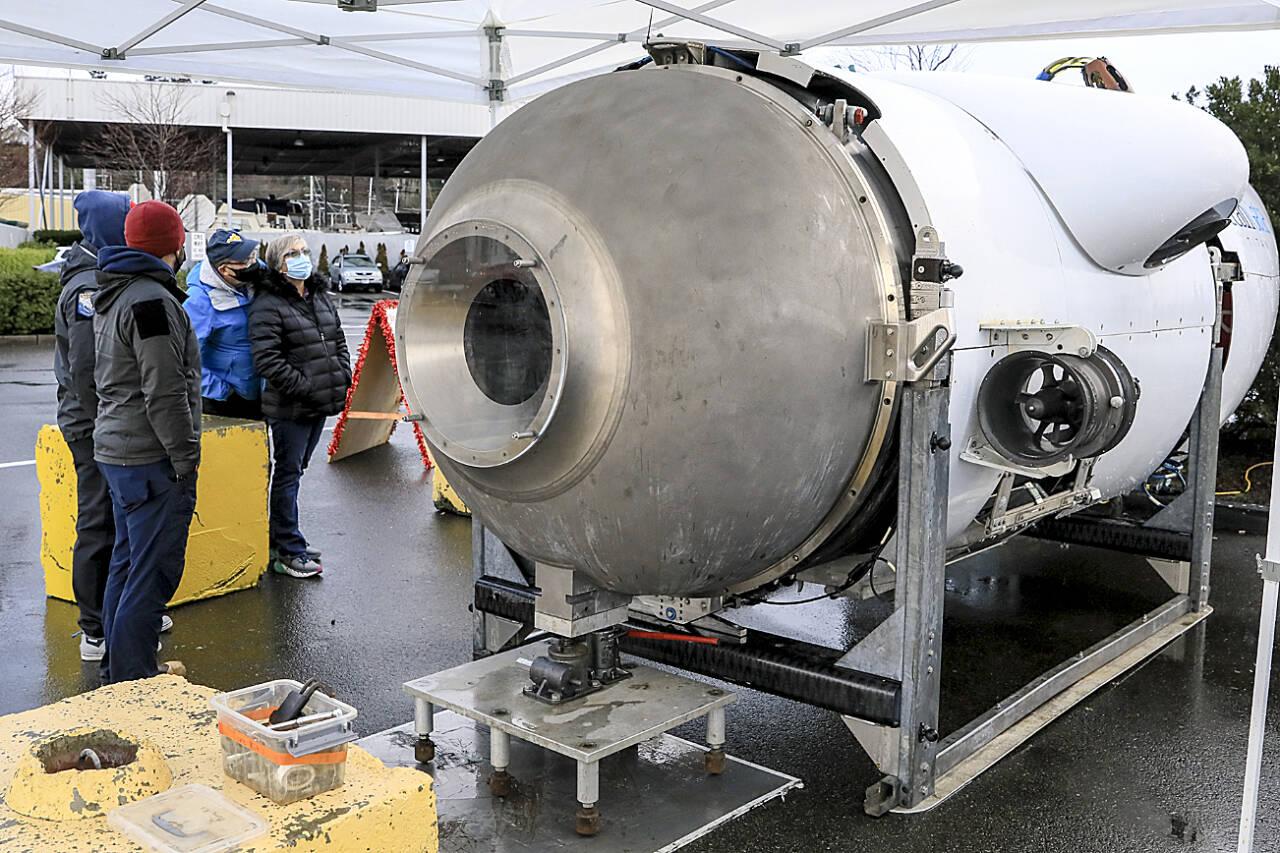By The Herald Editorial Board
The news Thursday of the apparent implosion of the submersible vehicle Titan and the certain deaths of five people — including that of the vessel’s pilot and chief executive of the Everett-based builder of the sub — ended days-long hopes that the Titan and those aboard, missing since Sunday during a dive to the wreck of the RMS Titanic, might be found and rescued.
Those hopes, supported by the knowledge that those aboard might survive for as long as 96 hours, launched a massive search effort that included the U.S. Coast Guard, Navy and similar forces from Canada, France and commercial operations. While a recovery effort may continue, the search ended following the discovery by a remote submersible of debris believed to be parts of the Titan in the vicinity of the ocean liner that sank in 1912. Thursday also brought news that Navy sensors on Sunday had detected a likely implosion near where the submersible was operating.
Lost along with Stockton Rush, OceanGate’s CEO, were British businessman Hamish Harding, Pakistani investor Shahzada Dawood and his 19-year-old son Suleman and French diver and retired navy commander Paul-Henri Nargeolet. Passengers had paid $250,000 each for the voyage to the Titanic site, following others that OceanGate had escorted since 2021 in earlier dives to the famed wreck.
Even as those deaths are mourned, questions now are rightly being asked about the risks OceanGate was taking in deploying its innovative submersible; the partnerships it drew on in designing and developing the Titan and how it described those partnerships in promoting its voyages; and the considerable costs of the search operation and the risks to responders that resulted.
While the cause of the Titan’s implosion may not be known soon, if ever, even before this week’s events, doubts had been raised as early as 2018 about the design and materials used by OceanGate for the sub, including those of a former employee, fired after he raised concerns about the vessel’s use of a viewport that was certified to an underwater pressure of only 1,300 meters (4,265 feet) for a submersible intended to dive to the Titanic’s 12,500-foot depth and pressure that is some 380 times that of pressure at the surface.
As well, the Titan, rather than using an industry standard of steel and titanium, featured a hull of 5 inches of carbon fiber and 3.25 inches of titanium, a design — coupled with OceanGate’s decision to forego testing and certification of the Titan before taking paying customers on expeditions — that raised concerns of maritime industry engineers, analysts and others.
A March 27, 2018 letter to OceanGate’s Rush from the Marine Technology Society, cited by The New York Times, urged Rush and OceanGate to seek testing and certification of the vessel.
“While this may demand additional time and expense, it is our unanimous view that this validation process by a third-party is a critical component in the safeguards that protect all submersible occupants,” the letter read.
OceanGate also drew on earlier relationships and work — including with Boeing, the University of Washington, NASA and others — referencing those relationships in promotional videos and other material but possibly exaggerating or misrepresenting those roles, as revealed in enterprise reporting Thursday by The Daily Herald’s Janice Podsada.
Boeing, the UW and NASA each denied participation in the submersible’s design or construction. Boeing clarified that it had worked with OceanGate and the UW on initial design of the 7-inch-thick hull, but for an earlier submersible designed to dive only to 500 meters. NASA also said this week it had consulted with OceanGate but had not conducted testing or manufacturing of the sub.
As well, the physics lab at the University of Washington told The Herald that its work with OceanGate on a $5 million research agreement was ended with only $650,000 of the work completed in designing the earlier submersible, dubbed Cyclops 1.
Yet, an OceanGate YouTube video about the eight-day “dive experience” claims: “We partnered with aerospace experts at the University of Washington, NASA and Boeing on the design of our hull,” in touting the reliability of sub and the company’s safety culture.
Acknowledging the lack of testing and certification now also raises concerns about what responsibility nations and others have in responding to an emergency that involves a company that cuts such corners.
Titan’s passengers signed waivers that acknowledged the possibility of injury or death. And certainly a $250,000 price tag should prompt a due level of scrutiny and risk assessment by those considering, as the video promises, “excitement, thrills and adventure on the high seas.”
But no such consultation of risks were afforded those who responded to reports of a missing sub. No estimate — beyond “millions of dollars” — has been made of the costs of the search that involved the U.S. Coast Guard, Navy and others, nor of the costs borne by taxpayers. Because the Titanic rests in international waters, no U.S. regulation applies to such adventure tourism there. Few would deny a search and rescue response to any in peril, but more reflection should be expected of those who venture into such situations without having taken proper precautions.
There is new recognition of the risk, too, for researchers and experts in higher education, industry and government agencies that their assistance and consultation — offered in good faith — can be used selectively, more for marketing and promotion than as intended in service of intended goals.
The sinking of the Titanic and the deaths of more than 1,500 people demanded reflection on its lessons in engineering and hubris.
Now 111 years later, the loss of the Titan and the deaths of the five aboard it calls for similar reflection.
Talk to us
> Give us your news tips.
> Send us a letter to the editor.
> More Herald contact information.

























